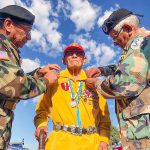
Surge wearing out first responders
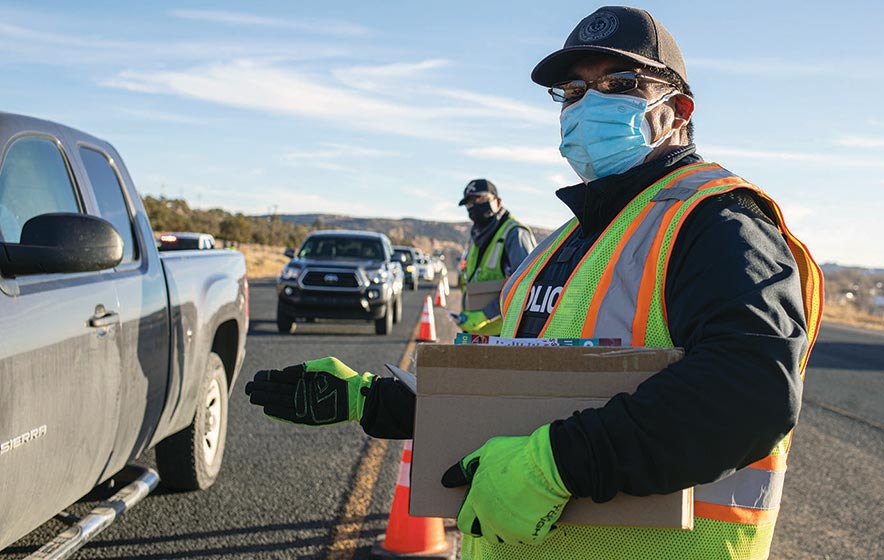
Navajo Times | Sharon Chischilly
Navajo Nation Police have been manning checkpoints where they urge people not to travel and to implement good hygiene protocols to prevent the spread of COVID-19, but this work takes them away from emergency calls. Recently they have used volunteer civilians to help man the checkpoints.
WINDOW ROCK
At this point, more than anything, it is up to the people to fight COVID-19.
As case numbers reach a record high during the Navajo Nation’s second wave, first responders such as the Navajo Area Indian Health Service and Navajo Nation Police are doing what they can with limited staff and resources to combat COVID-19 among the Navajo people. Both the Navajo Area IHS and Navajo Police have expressed the strain on resources and employees as they continue to work long hours.
But while these first responders work to prevent COVID-19 or tend to those who are already suffering from the virus, people continue to disregard public health orders of staying home and refraining from any social gathering. “Labor Day we let down,” said President Jonathan Nez as to when COVID cases began to increase again, during his virtual town hall. “We started going out … travel … doing our own thing. We didn’t recover. We just kept going up because this virus is contagious.”
Before Thanksgiving there looked to be a sliver of hope that this second wave would be plateauing, but this was for naught after the holiday weekend. Nez said Navajo epidemiologists have reported social gatherings have brought the most infections.
Even though stay-at-home orders were implemented and people were encouraged not to travel or host gatherings, it fell on deaf ears, and now the already fragile health care system is trying to keep up with demands and is considering entering crisis mode. “What we are trying to do right now is create additional beds,” said Navajo Area IHS Director Roselyn Tso to the Health, Education and Human Services Committee during a Dec. 3 meeting. “We believe at this point creating more space in our facility as safely as possible is the best way to do it,” Tso said. “The numbers are out of control and we are continuing to work to contain the spread.”
With hospitals reaching full capacity on the Navajo Nation, and nearly all hospitals in surrounding states having no available beds for patients to be transferred to, Tso said they received a verbal agreement with the veterans’ hospital in Albuquerque to send non-veteran patients to their facility.
“We are looking at every resource,” said Tso. “We are looking to get verbal or written agreement on the Arizona side to be transferred to Phoenix or to Tucson. We are looking to Shiprock to be transferred to Colorado and out to Utah. These are veterans’ beds to secure for our patients.”
As a public service, the Navajo Times is making all coverage of the coronavirus pandemic fully available on its website. Please support the Times by subscribing.
How to protect yourself and others.
Why masks work. Which masks are best.
Resources for coronavirus assistance
Loretta Christensen, chief medical officer for Navajo Area IHS, reported three facilities are nearly at a 100 percent capacity and they are running out of intensive care unit beds.
As the country experiences its third wave while Navajo Nation is in its second, the simultaneous peaking of the virus is problematic when it comes to competing for resources. “We all need high-flow oxygen, we all need critical medication, we all need more oxygen tanks and (it is) hard to get that equipment and supplies,” said Christensen. “If we don’t stop COVID, we are going to run out of beds, nurses, and supplies.” If this happens then health professionals will have to utilize a policy that will help them decide which patients receive care and which do not.
“It’s incumbent upon us and through your leadership that we have the Navajo people help us by not traveling, by staying home, wearing masks, distancing and washing hands frequently,” said Christensen. “Even when you’re with your family you should wear a mask. We are near full crisis status right now.”
The idea of resource allocation and the “ethical considerations” health professional may have to make is a worrying probability for Health, Education and Human Services Committee Vice Chair Carl Slater as he asked for Tso and Christensen to explain it for others who were listening in on the meeting. “I don’t know how to more clearly explain that we are in a dangerous situation right now in terms of our capacity of our area Navajo Area IHS health care system,” said Tso. “It’s being stretched to the limit.”
Resource allocation is where health professionals look at the resources — such as ventilators, high-flow oxygen, certain critical medication — available and give it to those who have a greater chance of surviving COVID-19. With the cases continuing to be over 100 cases per night, Christensen said delegates will be informed if it comes to this.
“Our policy looks at the health of the person, the potential of recovery and whether they are better or worse from when they first came in,” explained Christensen. “This is a way we have to do this to be fair to everyone, is who would have the best chance to survive. Those that don’t, we would provide supportive and comfort care, but we may not be able to give them the type of intensive critical care that would might help them recover.
“This is very difficult in medicine for doctors and nurses who train to save lives,” she said, “to say they might not be able to save every single person.”
The Navajo Police have also been trying to stretch what resources and staff they have to keep up with the demands of enforcing the public health mandates. It’s been a busy few months for the police, with conducting checkpoints, enforcing lockdowns and daily curfews, as well as continuing to take emergency calls, and dealing with the Dineh Benally marijuana farms. Chief Phillip Francisco said officers have reached the brim and like health professionals, officers are fatigued.
“We are trying our best to enforce the health orders,” said Francisco. “But we are stretched thin with officers going call to call to call. With this surge now, officers haven’t been able to have a break.
“The demands on the police department … we haven’t had the luxury to send officers home on vacation or have time off because the demands are so high,” he said. “Our staff and officers are tired.”
With 77 communities now experiencing uncontrolled spread of COVID-19, as of Tuesday night, health officials reported 159 new COVID-19 positive cases and a total of 688 deaths.
Health professionals have said with this kind of community spread, expect it to come into the workplace, and for NNPD the spread has resulted in closing of districts in order to be decontaminated on a few occasions.
When it comes to COVID-19 checkpoints, Francisco said civilian staff is allowed to assist in these. They have asked chapter officials and Council delegates to help with informing the public about COVID and encouraging people to stay home during these checkpoints, he said. Having civilian staff help at checkpoints alleviates the extra strain on officers, and allows them to continue with regular police duty.
“If we have officers who get sick then we won’t have enough people to take care of the needs of the community,” said Francisco. “Our most valuable resource for the Navajo Nation Police Department is our people, so taking care of them so they can take care of the public is of utmost importance.”

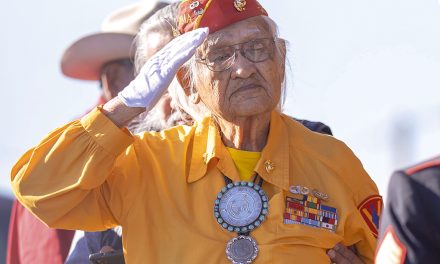
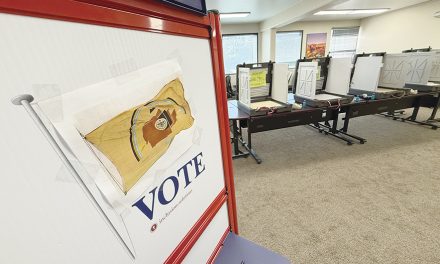

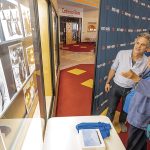
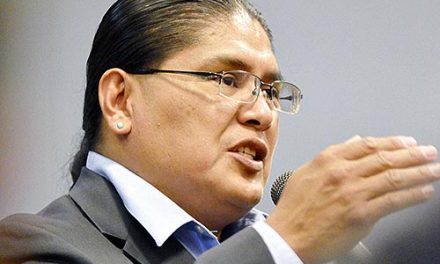


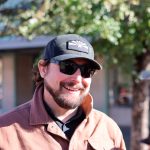

 Highway 264,
Highway 264, I-40, WB @ Winslow
I-40, WB @ Winslow